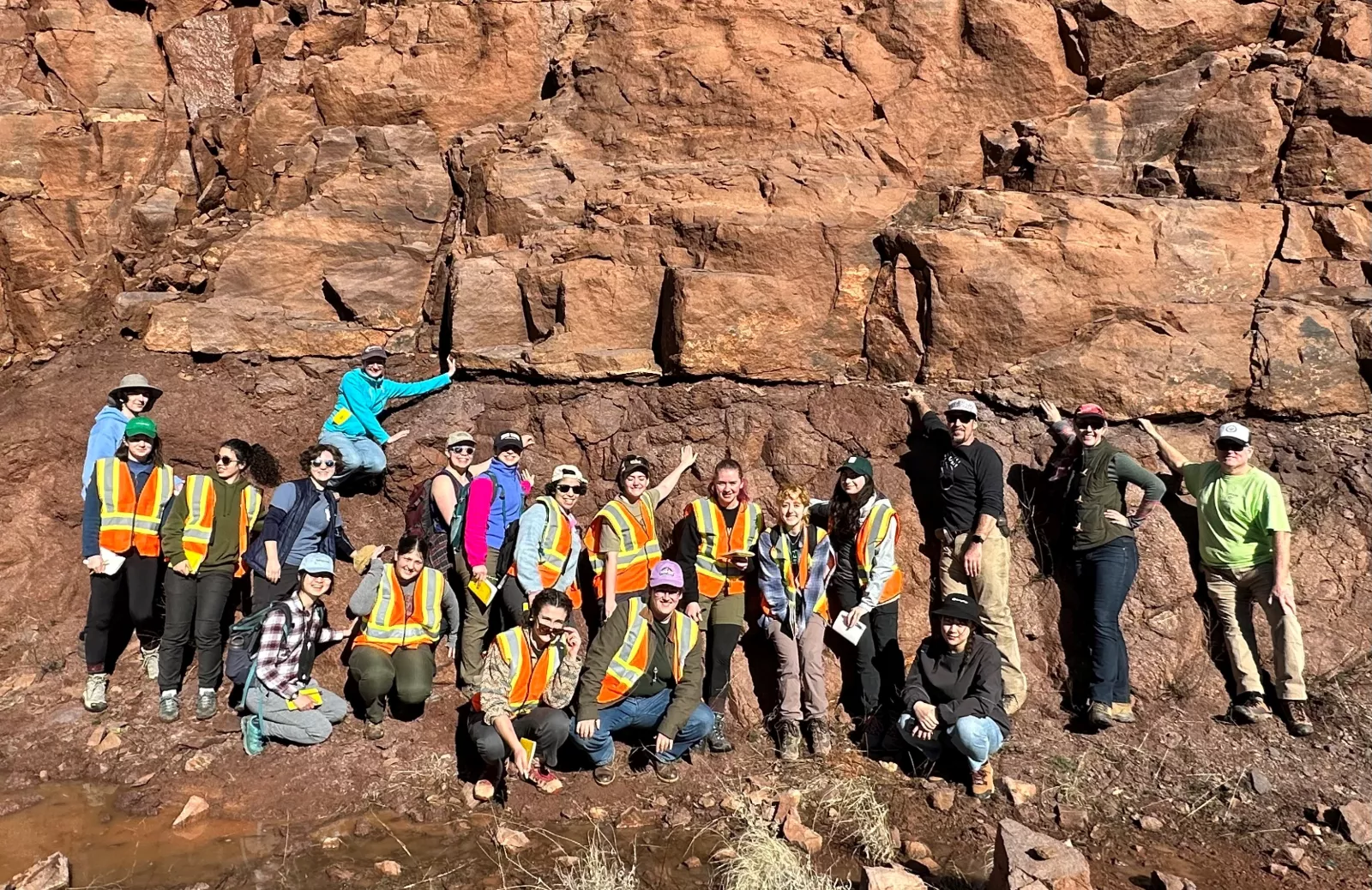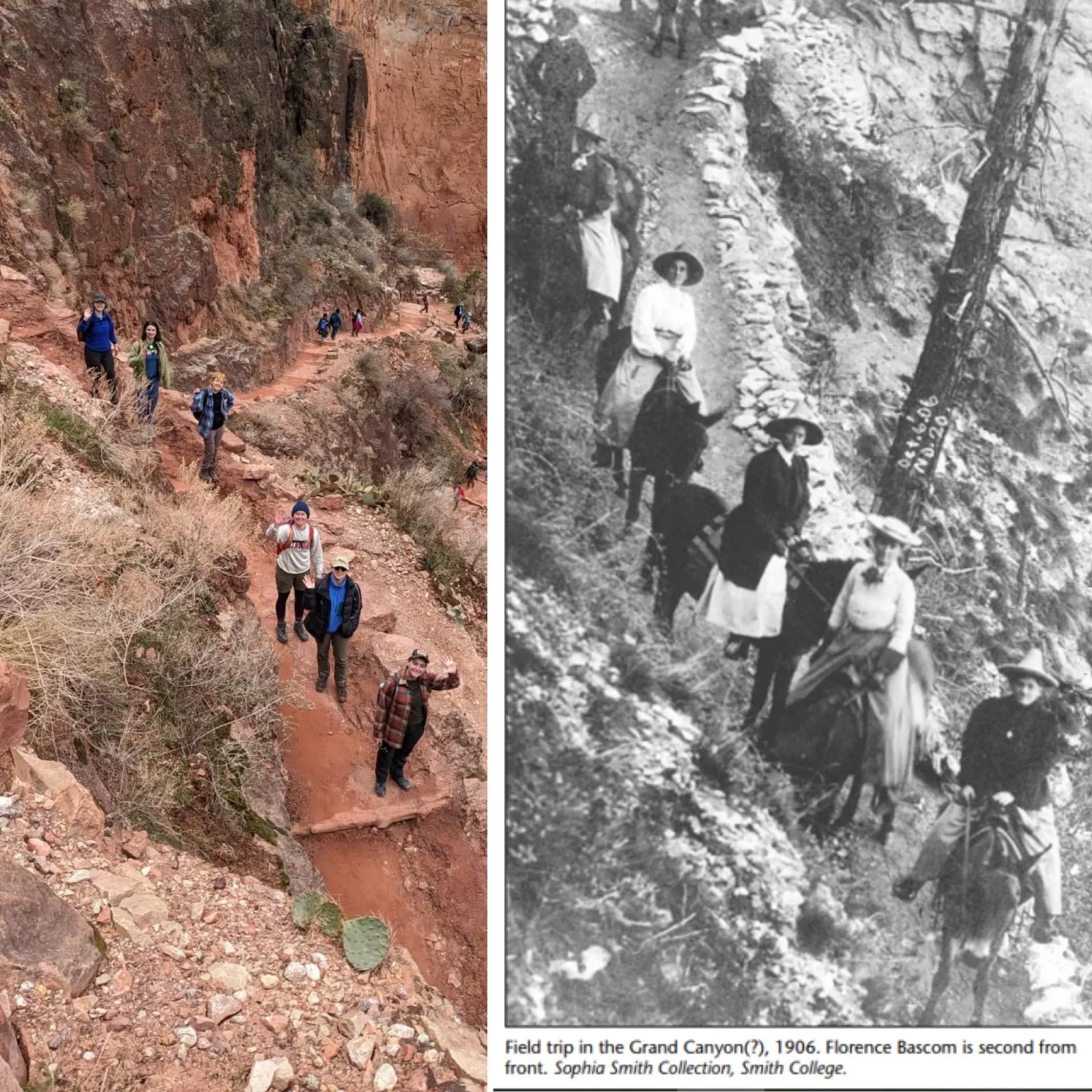
Professor Arlo Weil, chair of the Geology Department, and fellow geology faculty members Associate Professors Don Barber and Selby Hearth took 18 students to the four corners region during spring break.
The group toured the geology in central Arizona's Petrified Forest and Meteor Crater then traveled to the Utah border and took a river trip down the Colorado around Horseshoe Bend. After a few days in the Grand Canyon, they finished the trip with a visit to the volcanos of Flagstaff, Arizona.
"Geology Department annual field trips like the one to Arizona provide our students with exposure to a wide variety of rock types and geologic formations that are inaccessible in the northeastern United States," says Weil. "It is an old adage that the best geologists are the ones that see and think about the most variety of rocks. Our department faculty take that seriously and try to give our students as many and as diverse a number of field experiences as possible. Thanks to reserves from the department’s Watson Fund, our annual trips are subsidized for all students.”
While in the Grand Canyon, the students recreated a photo of Florence Bascom and a group of Bryn Mawr students taken in 1906 (sans donkeys). Bascom was among the earliest women to earn a Ph.D. in geology and founded Bryn Mawr's Geology Department. A full recount of the trip can be found on their trip blog.
“From checking out cool outcrops on the side of the highway to singing rock and roll while driving past monoclines to sliding on our butts down the icy Grand Canyon trail, our spring break geology trip was a fantastic experience," says Rosa Bieber-Stanley '25. "No amount of classroom learning can replicate the experience of being out in the field interacting with and interpreting rocks. I will carry the memories, learning, inside jokes, and chunk of Mazatzal gravel (1.6 billion years old!) still imbedded in my palm into the foreseeable future.”
Students in the Geology Department traditionally take one field trip each academic year during either fall or spring break.
The Geology Department seeks to give students a well-rounded Earth science education that balances fundamental knowledge of geology with broadly applicable problem-solving and communication skills.
The integrated science of geology combines biology, chemistry, and physics as they apply to the workings of Earth and other planets. Well-trained geoscientists are increasingly in demand to address the environmental challenges and natural resource limitations of the modern world. A central tenet for understanding and predicting Earth processes and environmental change is the ability to decipher past Earth history from geologic records. Thus, the major in Geology includes study of the physics and chemistry of Earth materials and processes; the history of the Earth and its organisms; and the range of techniques used to investigate the past and present workings of the Earth system.
Field and lab experiences are essential parts of geology training, and field trips and lab work are part of all introductory courses, most other classes, and most independent research projects.
Photograph by Kolb Brothers, Grand Canyon, AZ., “Florence Bascom, geologist, and other women on Grand Canyon expedition, 1906. ,” Smith Libraries Exhibits, accessed March 22, 2023, https://libex.smith.edu/omeka/items/show/8.
